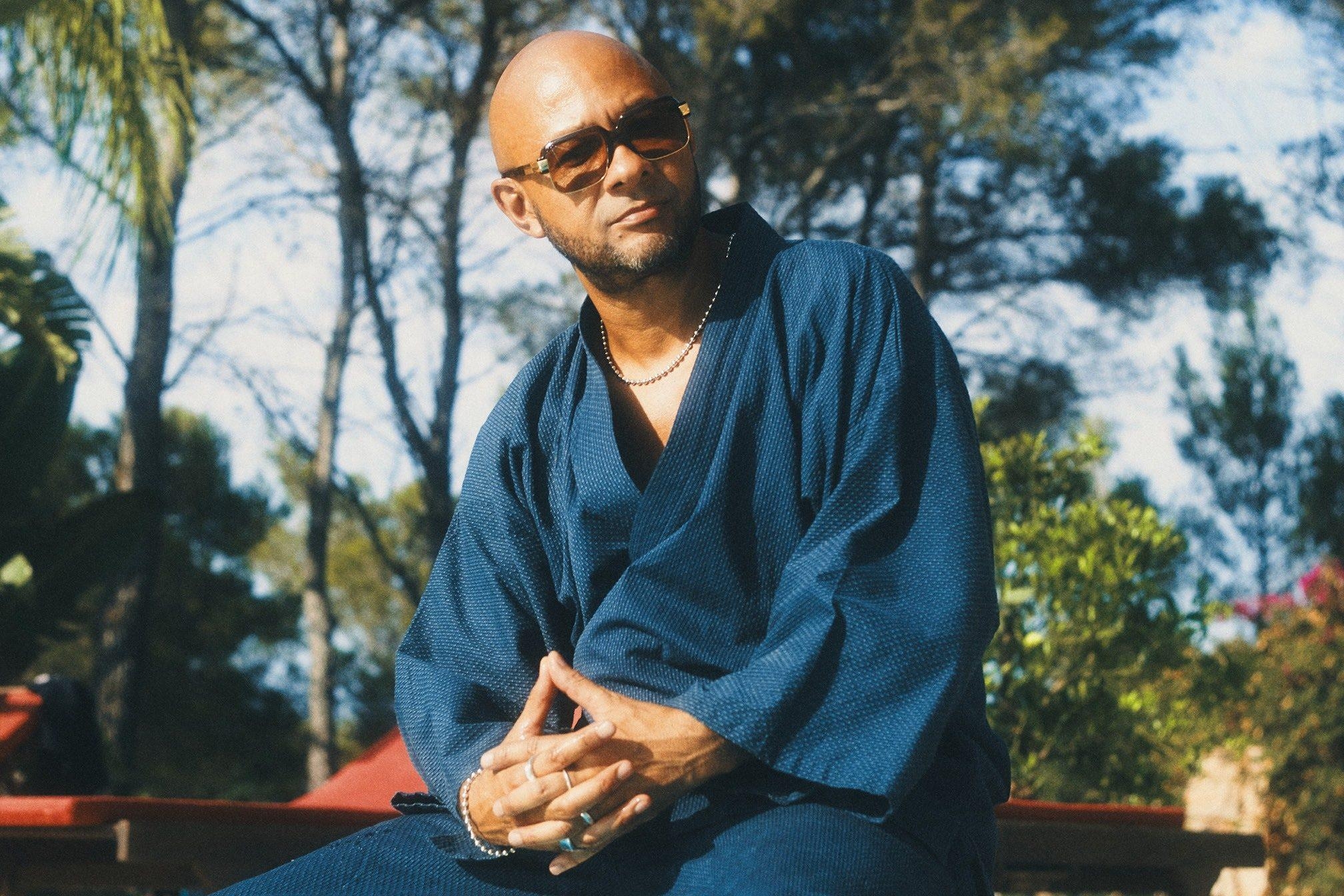 Interviews
Interviews
Fuelled by freedom: Nightmares on Wax has made the soulful soundtrack to a reopening world
Ralph Moore flew to Ibiza to meet George Evelyn in his natural habitat to talk soundsystem culture, the impact of a cancer scare, and why his latest LP may be his best yet
I was a mere teenager when Nightmares On Wax first entered my orbit with the proto-bleep instrumental ‘Dextrous’ in ‘89. The second-ever release on Sheffield’s soon-to-be-essential Warp Records imprint, the song traced a sonic terrain that led to a series of similarly successful rave-crushing 12” releases in 1990 from the likes of LFO and Sweet Exorcist, whose founding member Richard H. Kirk (alongside DJ Parrot, real name Richard Barratt) tragically passed away last month. In fact, two of Warp’s biggest hits of the rave era – ‘Tricky Disco’ by Tricky Disco and the still omnipresent ‘LFO’ by LFO – were not only bona fide rave smashes but also breaks-fuelled anthems that crash-landed into the UK Top 40 and onto our TV screens as part of Top Of The Pops increasingly dance-crazed Thursday night's coverage. In a world awash with Jive Bunny and Kylie Minogue, it really felt like these rave records had fallen to earth from an undiscovered analogue country in the clouds. It was more than thrilling: it was mind-bendingly brilliant. And they were all made in homegrown rave bunkers!
But to properly experience DJ culture down on the south coast, there was only one place to go to growing up. Sure, Carl Cox played early rave shows at Sterns along the coast in Worthing, but Brighton had expansive record stores, proper nightclubs with international guests, and a beach and seafront that sparkled with promise at 6:AM. The best store near the sea was called Rounder Records, and while it’s long gone now, at its peak it was the place to peruse rave flyers, buy 10 pound party tickets and marvel at future superstar Norman Cook selling CDs behind the counter. They also paid someone to spray-paint the best album artwork onto the side of the building, and to this day, the one seared into my memory (mainly because of the amazing artwork) was the iconic second Nightmares On Wax album ‘Smokers Delight’ which was designed by Leigh Kenny and Lee McMillan. Widely regarded among the best trip hop albums of all time, it's his most complete and soulful LP, though he almost matched it with ‘In a Space Outta Sound’. Rumour has it that N.O.W., real name George Evelyn, got the idea to make the album after listening to The KLF while tripping. Never let the truth get in the way of a good story, they say, but make no mistake: this remains his magnum musical opus thus far.

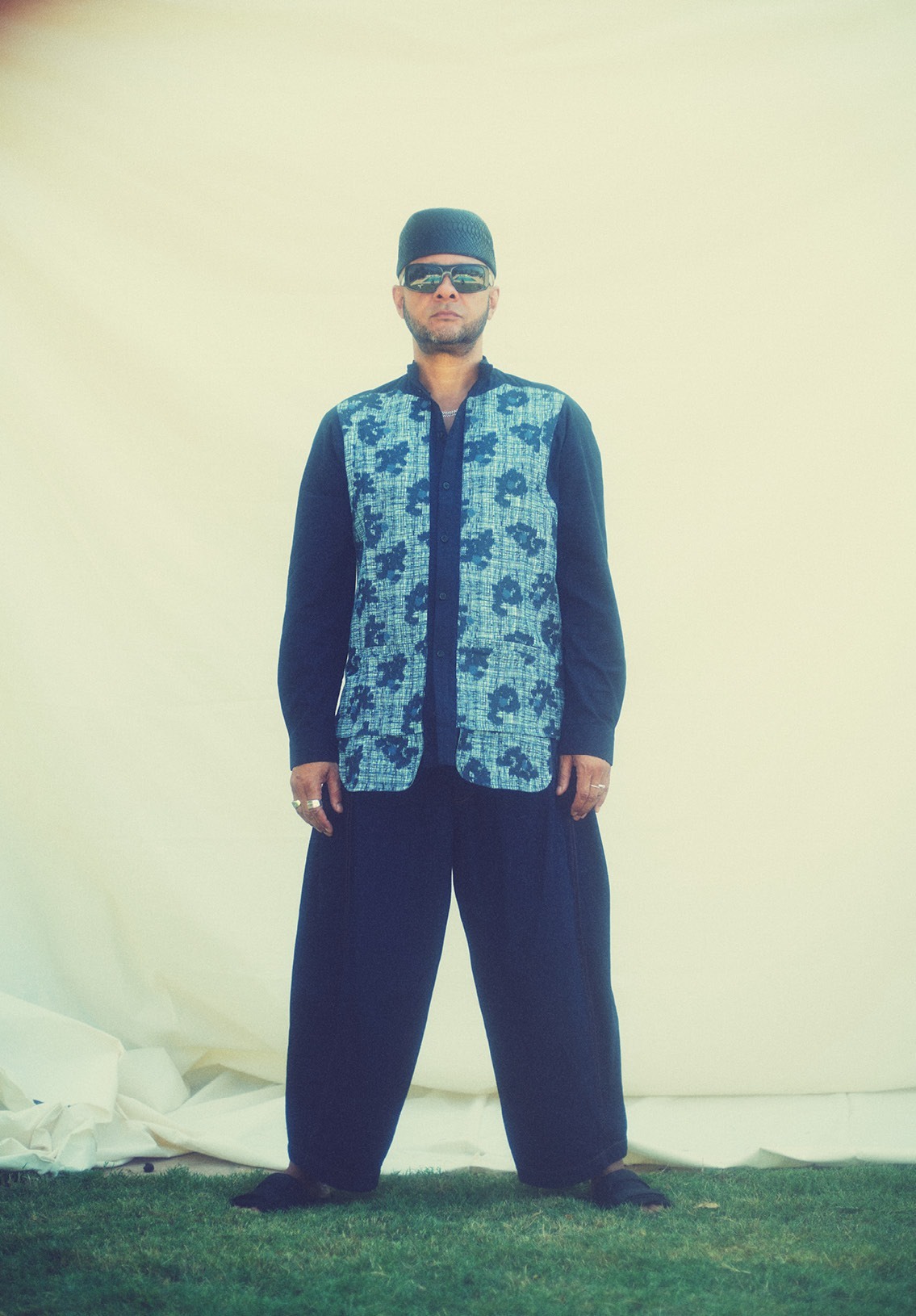
Of course, if you’re experiencing Nightmares On Wax for the very first time, there’s only one signature track that you should start with, and it’s the soul-drenched 1999 instrumental ‘Les Nuits’: it’s one of those records that you instantly connect with from the intro and immediately gives you a dopamine hit to the senses, thanks in part to the sample from 1973’s ‘Summer In The City’ by Quincy Jones and Valerie Simpson. And just in case you missed the message, early copies of the accompanying album were issued with a designer packet of Rizla papers featuring the album's artwork. If there’s one thing you can safely call George, it’s a bit of a hippy. But his own formative years were spent collecting what he calls “cuts and breaks.”
Talking about those early days, he recalls: “Soundsystem culture really came out of Lovers Rock in the UK. All the experimentation was there and as a DJ, we were doing what we called mega-mixes! Before we collected breaks, we collected cuts. Then you’d find the beat and from 84-85, when I was 14-15, I just collected cuts and breaks. We were collecting music from the States, stuff like TJ Swan and stuff from Chicago, and we were going to all-dayers in Leeds, Manchester or Bedford. A bunch of UK DJs would play and every once in a while you’d have a soul PA. That’s where I was being opened up to the wave of something.” Much later, Ricardo Villalobos and Max Loderbauer would remix his 1990 single ‘Aftermath’, turning in a sublime 17 minute dub-inflected refix for Warp: a very full circle moment if ever there was one.

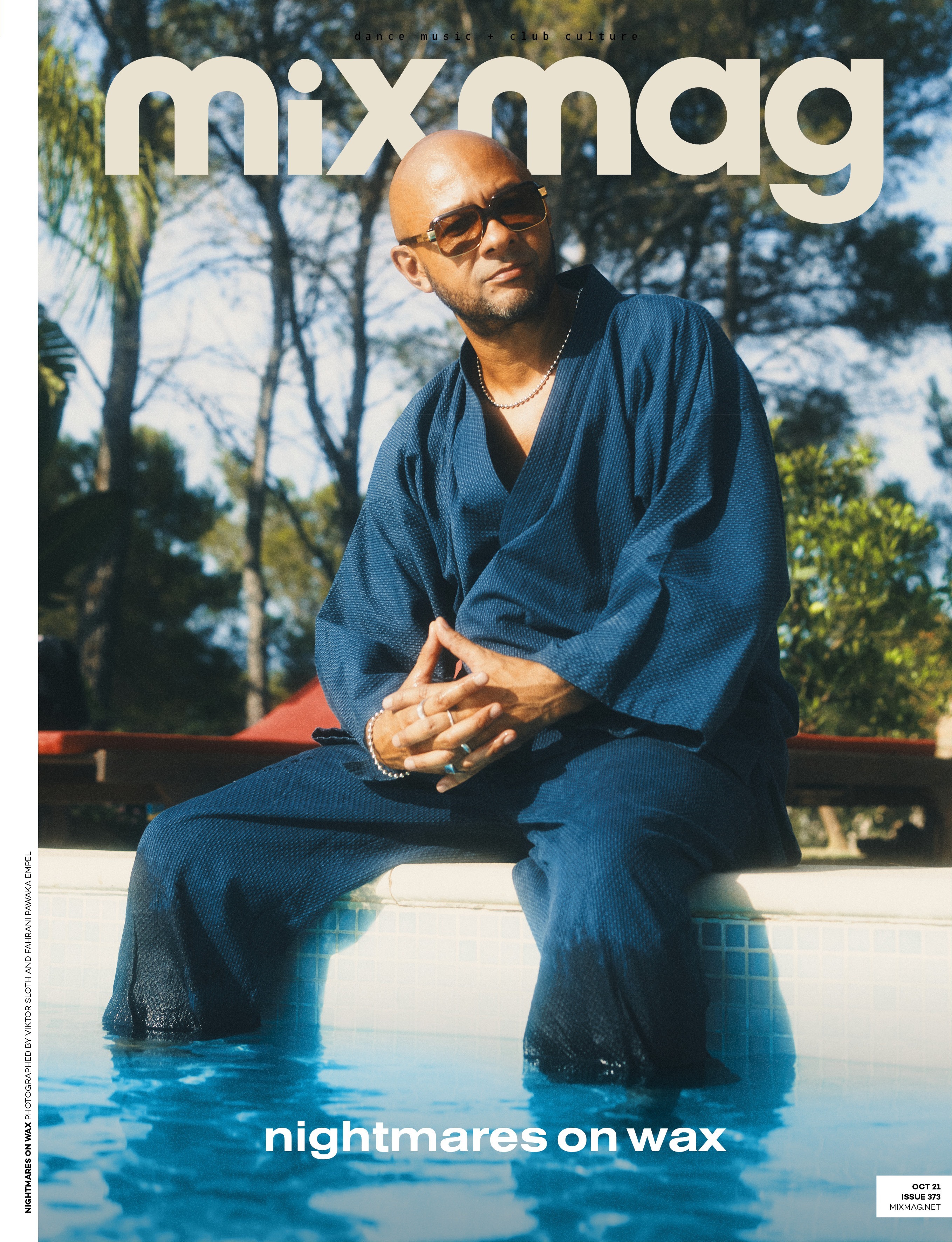
Born in Leeds, Evelyn grew up on a diet of street soul and early hip hop, and always had music in his blood. "In 1985, we were just coming out of the electro period. We were into Egyptian Lover, street soul, the breakdancing era and all of that experimentation!"
“I was being opened up,” he smiles, reminiscing about his memories of the early acid house era. "In 1988, ecstasy and the Summer Of Love happened and that crept into our scene. Even though we had blues after-hours [drinking dens the street soul heads would go to hang out when the clubs closed], the football lads and guys from the other side of town would come over to our side and were now on the dancefloor together – and there was unity all of a sudden. So the blues after-hours became something completely different, and the football guys would come to the hood.
"When I look back on the era, the music and the illegal raves, I think that’s how it must have been when jazz was born. It was a new wave. But you don’t realize it when you’re in it.” He’s caught in a rave moment now. “I remember one time being in a convoy to an illegal rave in Blackburn and there were three police cars trying to stop the convoy driving really slowly. Then we turned into a slip road and into an industrial estate – I think I was tripping at the time! – and I remember thinking we felt like we had a new found freedom and this is what it must have felt like in the sixties! All of a sudden, you’re rebelling. We lived for the weekend.” Was this your Woodstock? ”Definitely! We always felt that we missed out.”
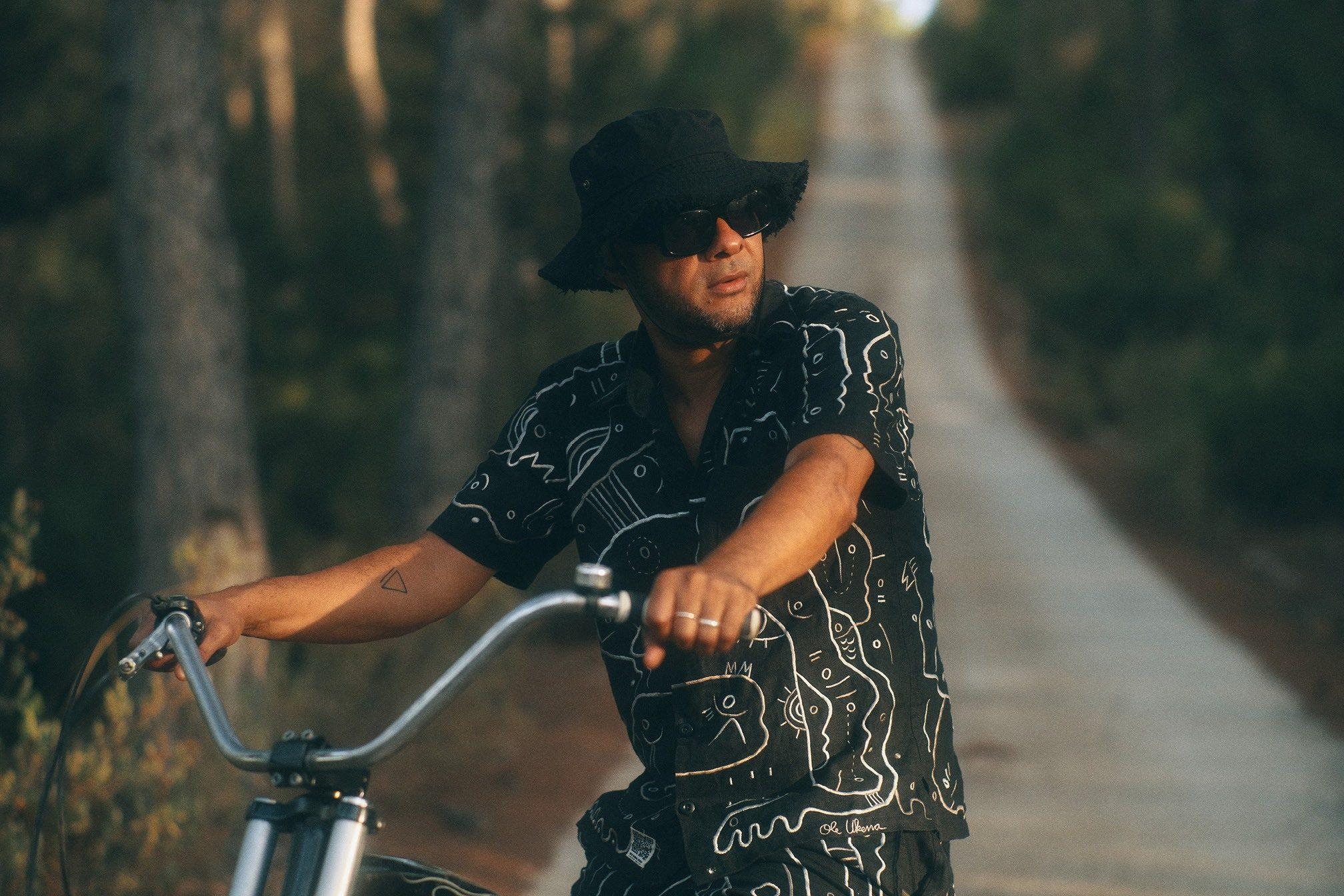
George now lives in Ibiza all year round with his wife and daughter and a studio that would make lesser mortals weep. He's one of the Balearic isle’s most celebrated musicians and over time, his music has sold upwards of a million copies globally. Now Warp’s longest-serving signing, he says he’s never been happier with his work/life balance, or indeed more creatively fulfilled. Is there a reason the label partnership has been so successful? “Definitely! We grew up together. We’ve had loads of different crossroads but none of us can imagine us not doing stuff together and there’s always been a freedom there. We went from me and [Warp founder/entrepreneur] Steve Beckett travelling around clubs with test pressings over to the growth and transition of the label. There’s always been a freedom there that’s good from a creative point of view. Being able to openly talk about what the objectives are: for example, how can we make this the best record it can be?” Some of the original label staff are still there alongside him, too. “A few of them! I just think it’s important to have communication. There have been times when I was on the other side of the Atlantic or went away for four years to make a record and you have to put the right team together to make it all work.”
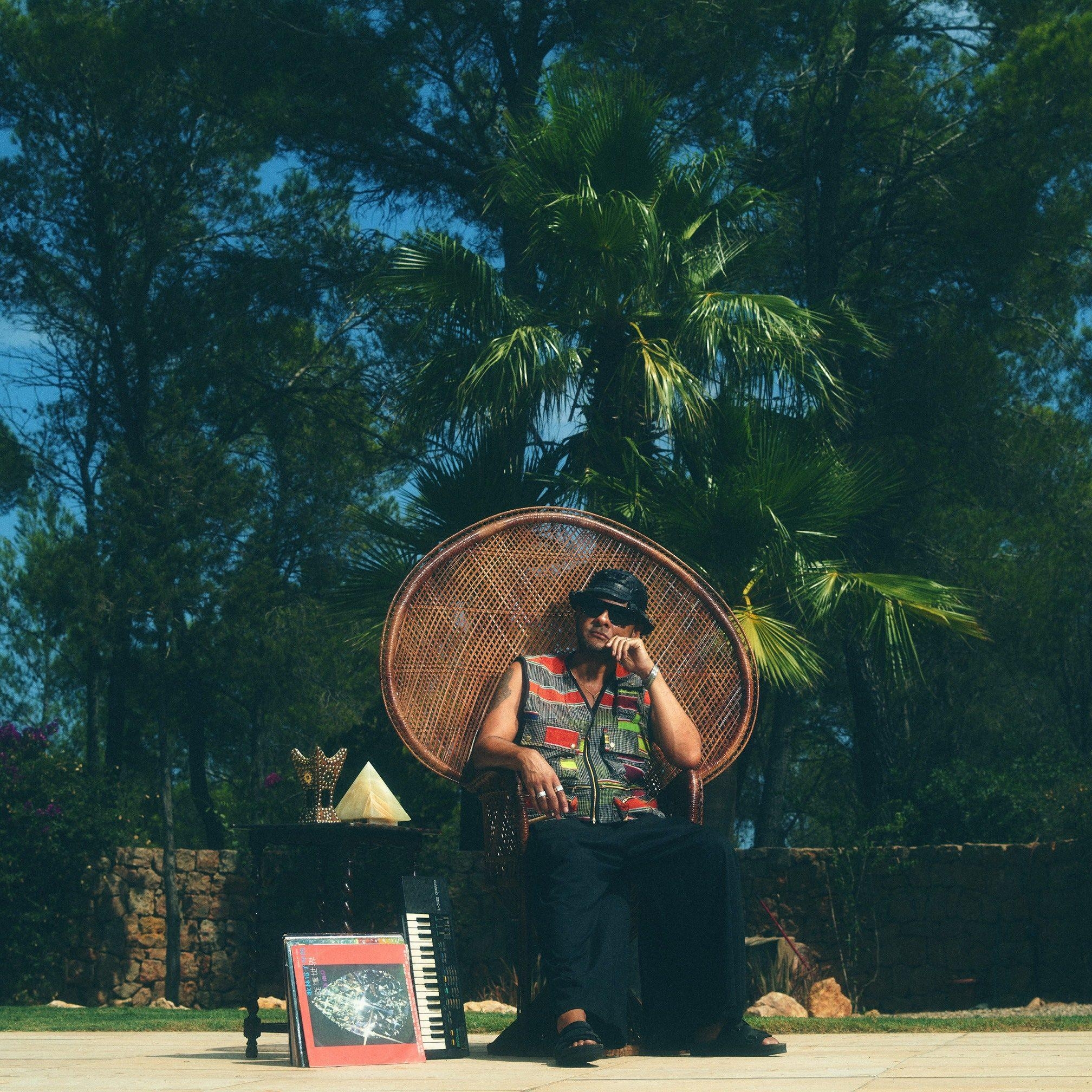
After 1989’s ‘Dexterous’ and 1990’s ‘Aftermath’, George with his original studio partners John Hanlon and Kevin Harper followed up with the 1991 debut album ‘A Word of Science: The 1st And Final Chapter’ for which George let go of those early rave and techno synths and sensibilities and opted for a more hip hop and soul-searching side. There’s been plenty of music since that has seen Evelyn create and solo signature style and follow a musical progression that in 2021 has made him as relevant as ever with a new generation. The list of collaborators on his upcoming album 'Shout Out! To Freedom...' includes NYC-based vocalist Haile Supreme and British jazz saxophonist Shabaka Hutchings [from Sons of Kemet] on standout cut ‘Wonder’, which is as good as anything he’s produced in the past three decades. Elsewhere on the LP, fast-rising UK artist Greentea Peng features on ‘Wikid Satellites’, while the first song to drop, ‘Imagineering’, is so sweeping in its ambition that it really could have fallen off the ‘Smoker’s Delight’ magic bus at the last minute. If there’s one thing George does very well, it’s joining the dots with absolute E.A.S.E.
The album also came about at a time of profound change for George: he’d had a cancer scare that changed his perspective irrevocably. “This record is probably the deepest record I've written,” he says. “I remember having a conversation saying that I need to go into writing this album as if this was the last album I was ever going to write. I asked myself: What would I do? How deep would I go? It was kind of ironic that I did end up experiencing that feeling for a time. Especially in the two week period where I didn't know what the results were going to be.” As a result, the new music is bold, fresh and full of freedom.
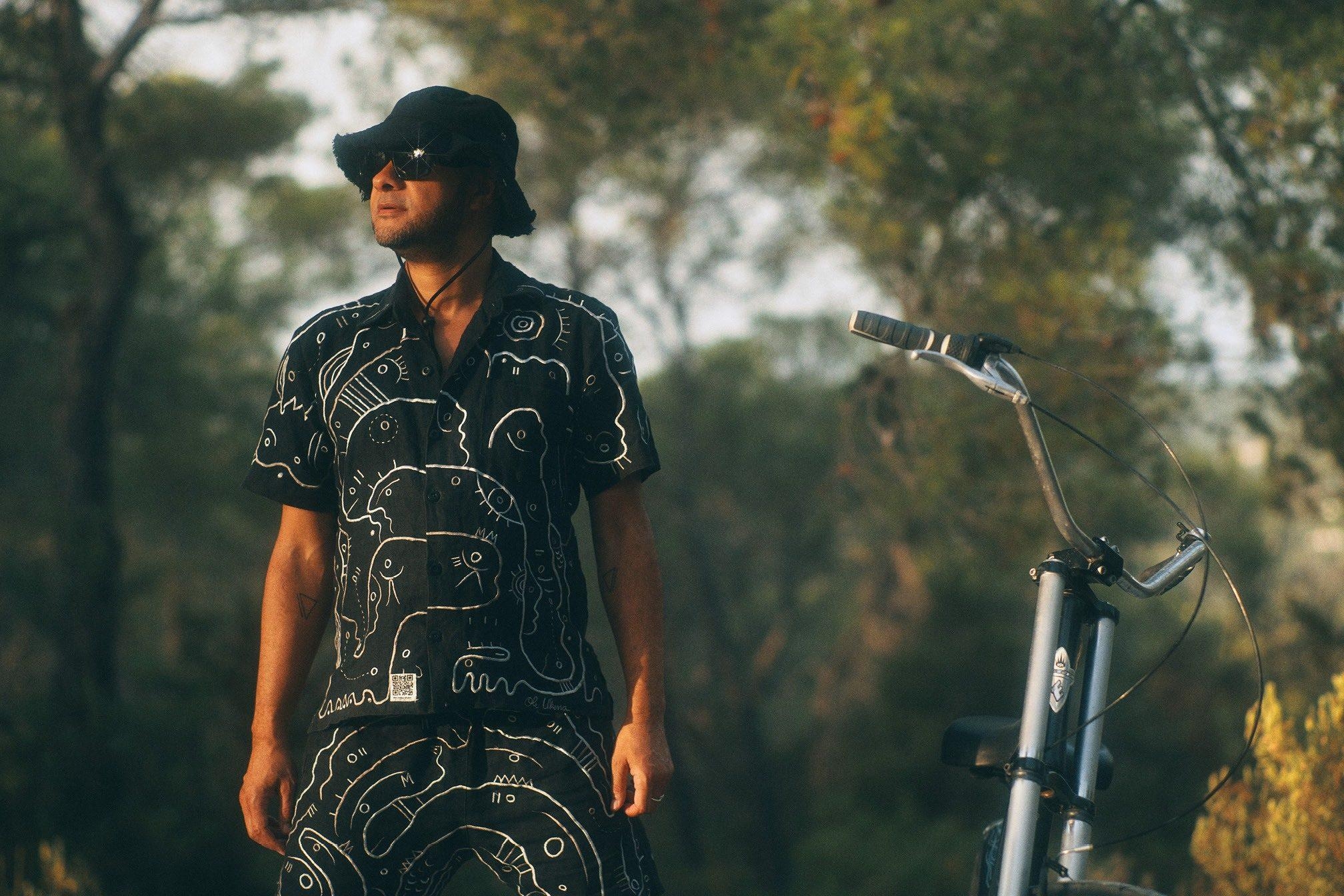
Before the pandemic, George was always busy, always travelling. Lockdown brought a change of pace. “I live in the north in the countryside but during the pandemic I realized I never lived in this house, I was always touring.” The pandemic equally brought Ibiza's usually booming party scene to a halt. “Right now, we’re limited to Las Dalias which is still outside, Cova Santa the same, and Pikes. That’s all people have right now. There’s not anything in between. There are a lot of villa parties, but what we’re really going through is gentrification of the island. The island has always been changing. Now, it’s about what the intention is. Is the intention to support the club scene or to cater for a different sector of society? It kind of feels like it’s catering to something different.”
Freedom is clearly important to George. His musical Nightmares not only opened electronic doors to new sonic pathways, he also brought a much-needed soul and dub sensibility to everything he did. As a young buck, George was inspired not only by Quincy Jones, but also Curtis Mayfield, and his all-time favourite artist Marvin Gaye, whose smooth delivery and panache is evident in so much of his Wax. “My favourite album is Marvin Gaye ‘What’s Going On’ and there are a number of reasons for that. The content of what he’s singing about has never stopped being relevant. He was suppressed and that album was shelved for two years and it ultimately became Motown’s biggest album. But they were scared of the truth! And just like Bob Marley – there’s truth in there, whether he’s talking about love or war. Music has always been the channel for the common man or woman against the system. Now I find it’s the minimum amount of artists speaking up for the common man or woman." He says he expected more from his fellow artists in challenging the powers that be. “I am dismayed,” he shrugs. “Getting into music, I came from a reggae, soundsystem and hip hop background and the voices I expected to hear have been quiet. There’s been a bit of an over-reach in authority regardless of where you come from."
"Maybe social media has a part to play in that," he ponders. "For me, it’s about art: art is a mirror of what’s going on socially. You can connect the dots. So this has been the best time to write because reality itself is being questioned!”

“There are so many amazing next generation artists,” he smiles. “And I am inspired by them. This album was made very organically and nothing was that challenging. With Haile Supreme and Mara TK from New Zealand [singer of the Kiwi future soul trio Electric Wire Hustle] on there, those were in studio sessions I did pre-pandemic. Everything else we did remotely. It was kind of amazing to be able to pull it off that way but we managed to do it and that happened because of the way the energy was at the time. Nobody knew what the fuck was happening!”
He pauses for a moment. “It’s a really fruitful time to write. I was writing about what’s happening on the inside and we came up with loads of profound things. And I also think if you can’t find something to write about now, it’s time to hang up your tools! Throughout history, the best music is written when there are social pressures. And we’ve all been in it, working remotely. It’s been fascinating to see how deep we were able to go.”
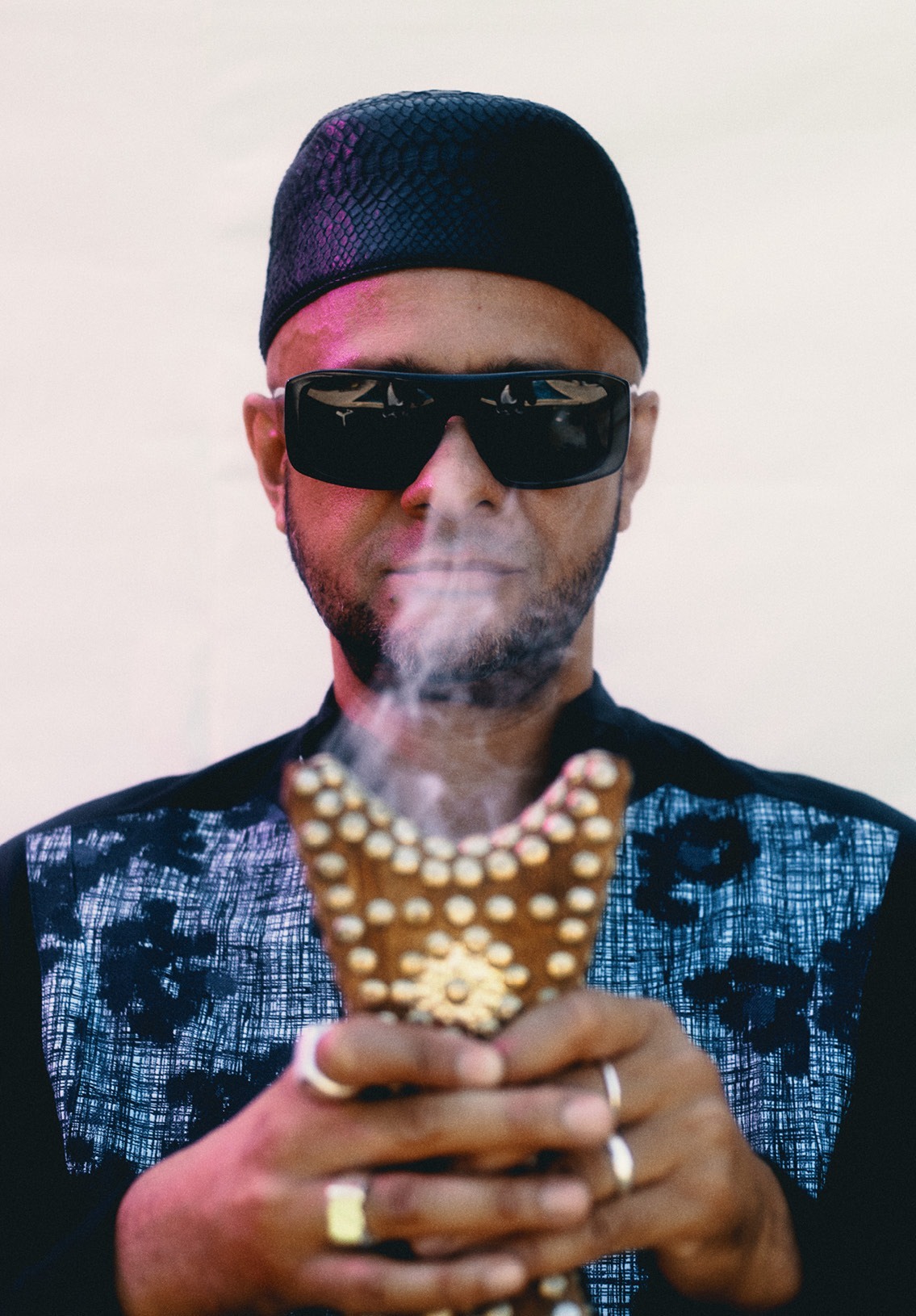
George is already midway through Part Two. “I got to a point last year when I went to the beach and listened to what I was making. And then it hit me – there are two albums here! I could feel that there were two and now in the way it’s going, stuff starts to fall into place. I didn’t even have a title until I’d captured the message and then I realized it was about definitions of freedom. It might be a job, relationship or childhood trauma. This is such a deep and fruitful subject, not just for my own personal journey but also to let people know they’re not alone. So this album brought me to place where I am pondering what freedom is. This is not about me telling, it’s me asking the question and being open to the feedback. But I don’t think I am allowed to disclose the collaborations just yet!”
Despite playing his cards close to his chest, George posted a black and white photo with legendary MC Yasiin Bey, fka Mos Def, on Instagram as I flew home, indicating a next-level collaboration that contravenes his previous statements about remaining tight-lipped. That's likely a way off, but 'Shout Out! To Freedom...' is tantalisingly close, ready to provide the jubilant soundtrack to the world reopening.
Nightmares On Wax new album 'Shout Out! To Freedom...' is out now via Warp Records.


